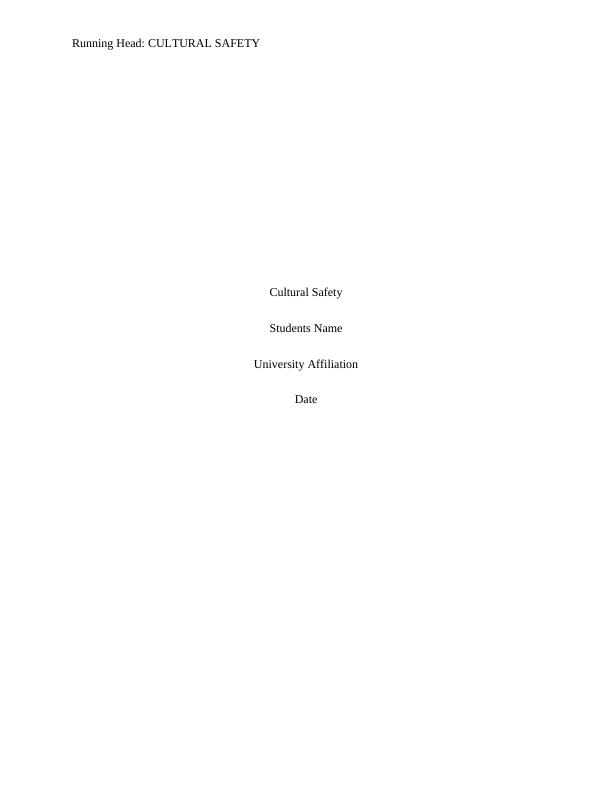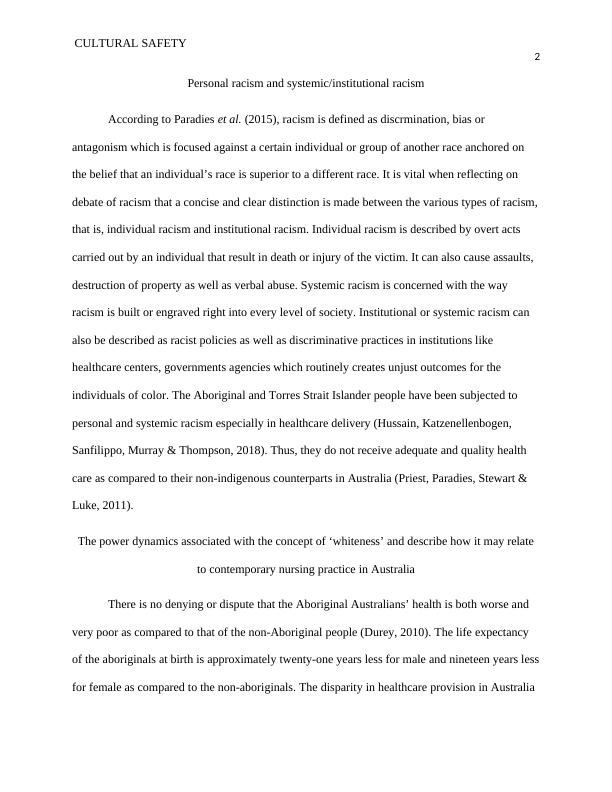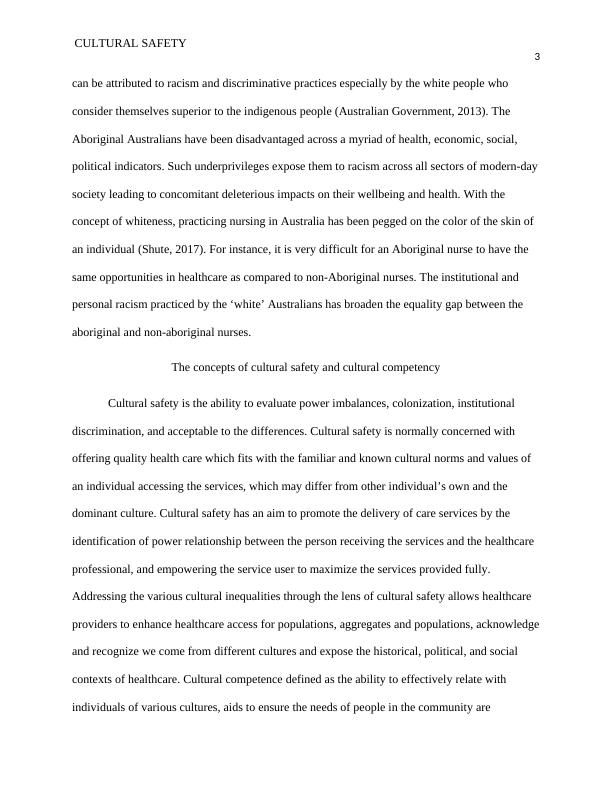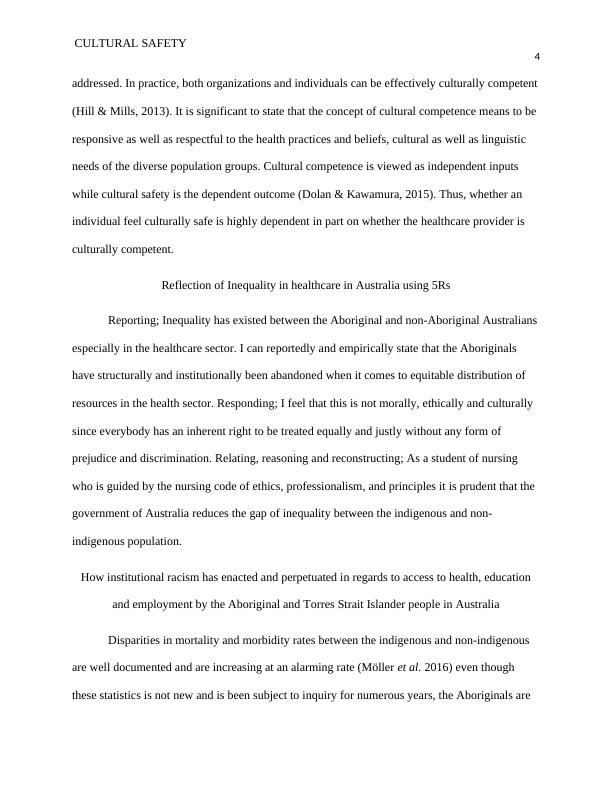Cultural Safety
Write an essay on cultural safety and its importance in achieving health equity for Aboriginal and Torres Strait Islander peoples.
11 Pages3180 Words173 Views
Added on 2023-04-23
About This Document
This document discusses personal and institutional racism in healthcare, particularly for Aboriginal and Torres Strait Islander peoples in Australia. It explores the concepts of cultural safety and cultural competency, and how they can address these issues. The roles of nurses in providing healthcare services are also examined using the 5Rs of Reflection Framework.
Cultural Safety
Write an essay on cultural safety and its importance in achieving health equity for Aboriginal and Torres Strait Islander peoples.
Added on 2023-04-23
ShareRelated Documents
End of preview
Want to access all the pages? Upload your documents or become a member.
Racism in Australia: Personal and Institutional Discrimination
|13
|2674
|158
Role of Nurses in Addressing Health Needs of Aboriginal and Torres Strait Islander People
|12
|2497
|65
Comparison and Contrasting of Personal and Institutional Racism in Nursing
|10
|1558
|30
Assessment title - Cultural Safety Essay Name Student number Tutor name
|12
|2918
|104
Influence of Racism Report
|4
|755
|45
Aboriginal & Torres Strait Islander Peoples’ Wellbeing
|10
|2498
|206




